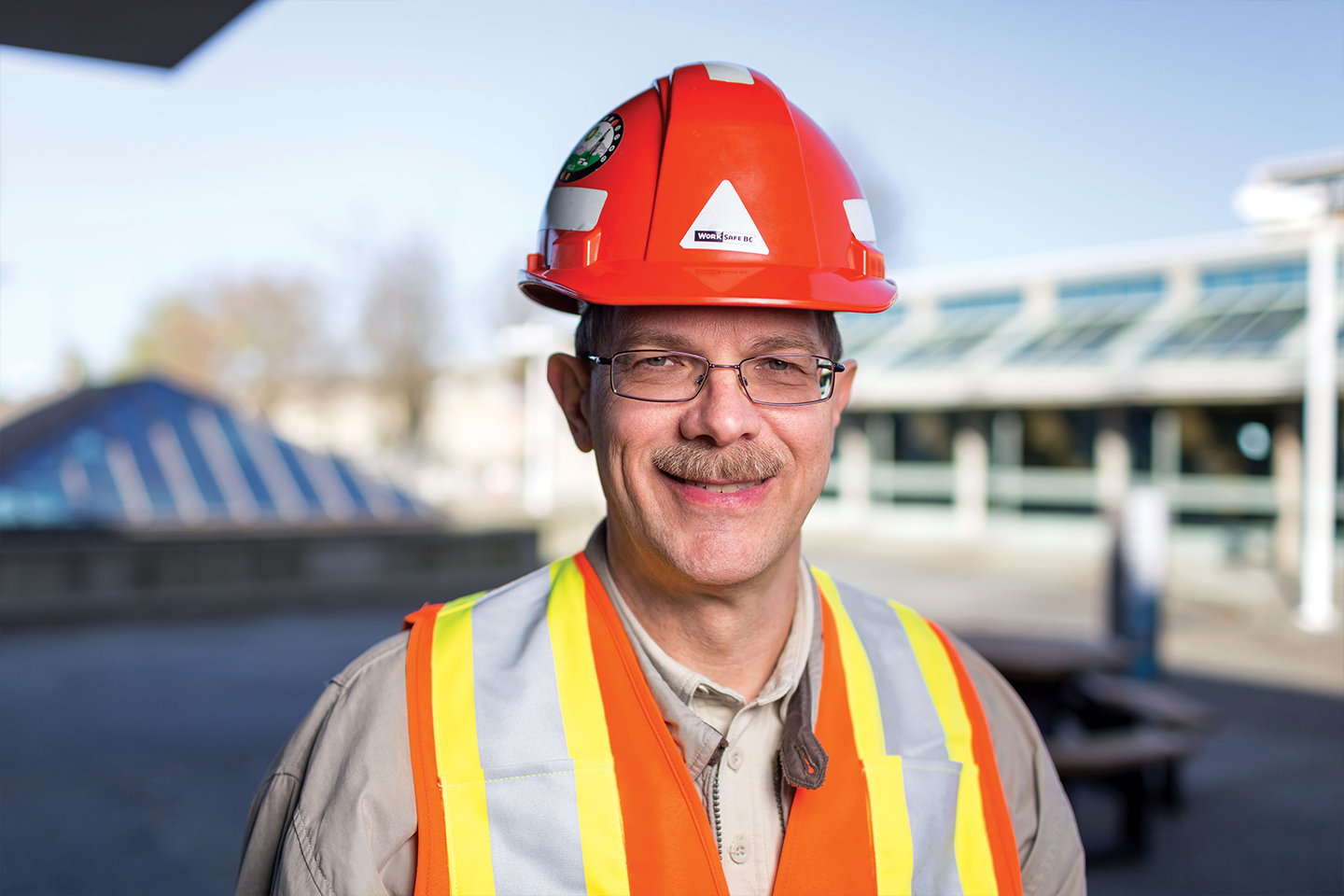Preventing carbon monoxide poisoning from outdoor heating units
Requirements for preventing communicable diseases such as COVID-19 have prompted many restaurants, breweries, coffee shops, and other establishments to create outdoor patios, including some with enclosures and heating systems to keep these spaces comfortable year-round. Senior occupational hygienist, Geoff Clark, explains the risks of heaters powered by natural gas or propane, and the precautionary measures you should take to prevent carbon monoxide (CO) gas exposure for staff and guests.
Geoffrey Clark
Senior Occupational Hygienist, Risk Analysis Unit
Region: Richmond
Years on the job: 15
What is CO?
A. CO is an odorless, invisible, and toxic gas that is a product of combustion. It interferes with the ability of blood to carry oxygen to tissues, most importantly the brain. If exposure to CO exceeds safe levels, it can cause a range of health symptoms, and can even lead to death.
What establishments are most at risk of CO exposure?
A. Any outdoor dining or seating venue with unventilated and enclosed spaces that use propane or natural gas heaters may create a risk of CO exposure.
How can I reduce the risk of gas heaters in my workplace?
A. Employers that use natural gas or propane heaters need to have them properly installed by professionals. The installation, operation, and maintenance of heaters should be done in accordance with the manufacturer’s instructions. Use CO detectors to provide a warning system in case CO levels rise, and test them regularly. Keep heaters away from objects that could catch on fire, and avoid using them in areas where employees could come into contact with them. Ensure sufficient ventilation in the area. If using fans or other ventilation systems, make sure that they do not blow air from one guest area to another as this could spread communicable diseases. When in doubt, get assistance.
Workplaces with outdoor gas heaters should have an exposure control plan in place that details safety protocols to prevent exposure and what to do in the event of an exposure. Workers need to be properly trained on how to safely work around, operate, and maintain heating units and related safety equipment. Because CO cannot be seen or smelled, it is important to properly train workers on the symptoms of CO poisoning.
What are the warning signs of toxic CO exposure?
A. Things to look for when CO concentrations exceed a safe level are workers experiencing headaches, dizziness, and nausea. At higher levels of exposure, headaches may become severe and workers may become confused, vomit, or collapse. Levels in excess of this can quickly be fatal.
If CO does reach unsafe levels, the first step is to get people away from the source of the exposure. Call 911 in the case of a severe or prolonged exposure or symptoms.
What is the best way to safely and efficiently heat my outdoor spaces?
A. There are many commercially available heaters that employers can use on their patios, including ones powered by propane, natural gas, or electricity. They come in configurations specifically designed for patios, such as overhead space heaters, as well as portable heaters that can fit above or into tables or be moved around spaces.
The safest approach is to heat spaces with electric heaters. If you use electric heaters, you do not have to worry about CO levels, testing, proper ventilation, and toxic gas exposure. Electric heaters may also provide a cost savings in terms of labour and expenses for their installation, operation, and maintenance.
Where can I get more information?
A. We’re here to help. Visit worksafebc.com and search for “carbon monoxide,” “carbon monoxide exposure from heaters in outdoor dining spaces,” or “carbon monoxide exposure in industry.” You can also contact our Prevention Information Line with questions. Call 604.276.3100 or toll-free at 1.888.621.7233.
Looking for answers to your specific health and safety questions? Send them to us at worksafemagazine@worksafebc.com and we’ll consider them for our next “Ask an officer” feature.
This information originally appeared in the Sept./Oct. 2021 issue of WorkSafe Magazine. To read more or to subscribe, visit WorkSafe Magazine.

